 Arkaroola Wilderness Sanctuary threatened by uranium mine
Arkaroola Wilderness Sanctuary threatened by uranium mineThe world-renowned Arkaroola Wilderness Sanctuary in South Australia’s spectacular Flinders Ranges is threatened by a proposed uranium mine.
Adelaide-based minerals exploration company Marathon Resources Ltd will seek a permit to mine almost 45 million tonnes of mineralized ore to produce 900 tonnes of uranium a year.
Arkaroola’s owners and operators, Margaret and Douglas Sprigg, are deeply disturbed by Marathon’s proposal. “We don’t want a mine – of any description – on Arkaroola”. Their father, a prominent SA geologist and conservationist, Reg Sprigg, purchased Arkaroola in 1967. With his wife Griselda, Reg transformed the former sheep station into the multi-award winning wilderness sanctuary that has become an iconic Outback tourist destination.
“While we are not against mining per se, the thought of a uranium mine right in the heartland of this fragile but spectacular landscape is abhorrent to us.”
“We realise that because Arkaroola is on a pastoral lease we have limited legal rights to stop mining. So we are calling on State and Federal governments to help us preserve this ecological and geological wonderland and refuse uranium mining permits within Arkaroola’s boundaries”.
Arkaroola is located in a Class A Environmental Zone. This zone was created to protect places of environmental significance such as Arkaroola. Development within a Class A Environmental Zone is only permissible where the deposits are of such paramount significance at a state and national level, that all other environmental, heritage or conservation considerations may be overridden. Development of a uranium mine at Arkaroola’s Mt Gee, a Geological Monument, would contravene Class A Environmental Zone conditions.
Uranium deposits, of national and state significance, are currently being developed on the plains east of Arkaroola Wilderness Sanctuary by Heathgate Resources, and by BHP Billiton at Olympic Dam.
Through sensitive management the Sprigg family has conserved this unique part of the world for more than forty years. “Over four decades our late parents developed this remote sanctuary at huge financial and personal cost. Their life’s passion was devoted to conserving a very special part of our land for everyone – Australians and overseas visitors alike. Our parents understood that controlling access and restricting all development, including the road network, to the periphery of the property was necessary to effectively conserve its rich ecological assets. We deeply respect their vision and their achievement and we are committed to maintaining Arkaroola’s integrity.”
Margaret Sprigg said the fragile nature of the Arkaroola environment would be severely impacted by mining of any kind. Rehabilitation of disturbed sites due to mining operations would be extremely difficult to achieve in such mountainous terrain, exacerbated by climate change. It would take decades, perhaps centuries for the land to recover.
Arkaroola is 600 kilometres north of Adelaide and covers an area of 610 square kilometres. The wilderness sanctuary features rugged mountains with towering granite peaks, magnificent gorges, ancient seabeds and life-sustaining waterholes. The sanctuary is home to rare and endangered species including the yellow-footed rock wallaby and the short-tailed grass wren.
It has become a leading ecotourism destination and offers more than a dozen Advanced Ecotourism accredited tours, including the famous Ridge Top Tour that thrills patrons with its 4WD trek through steep and spectacular scenery.
Doug and Marg Sprigg
Arkaroola Wilderness Sanctuary
admin@arkaroola.com.au
www.arkaroola.com.au

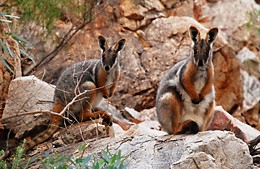
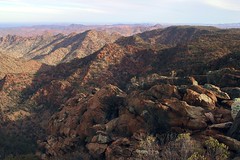
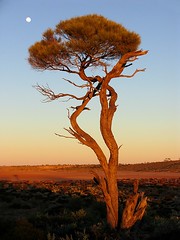
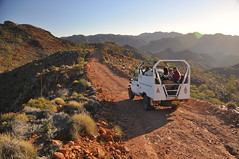



![link to the u[n]sa homepage](http://users.chariot.net.au/~greenh/blog/unknownsa_ublog-text.gif)
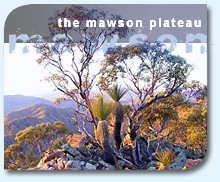
![link to the u[n]sa features page](http://users.chariot.net.au/~greenh/blog/features_ublog-text.gif)
![link to the u[n]sa kangaroo island feature image pages](http://farm2.static.flickr.com/1306/1187313059_93fdefd86b_o.jpg)
![link to the u[n]sa katarapko creek / murray river np feature image pages](http://farm2.static.flickr.com/1435/1181073355_b5c45f799d_o.jpg)


!['constellation' - wild country [national] set on flickr](http://farm1.static.flickr.com/155/415123844_3e6da621e5_s.jpg)

!['the bay serene' - the wild west [coast] set on flickr](http://farm1.static.flickr.com/121/312226516_606ac35455_s.jpg)







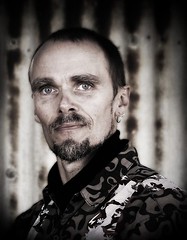
![u[n]sa journal -thanks for your time! u[n]sa journal - thanks for your time!](http://users.chariot.net.au/~greenh/blog/journal_ublog-text.gif)